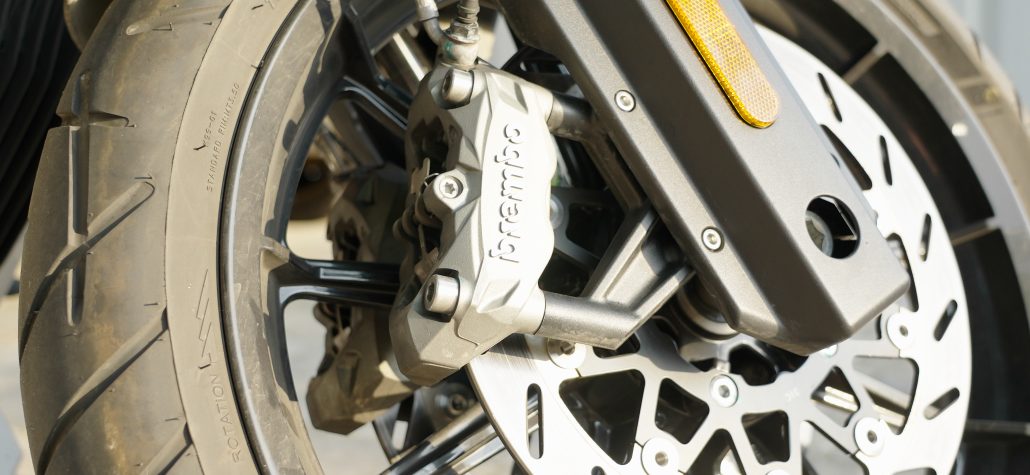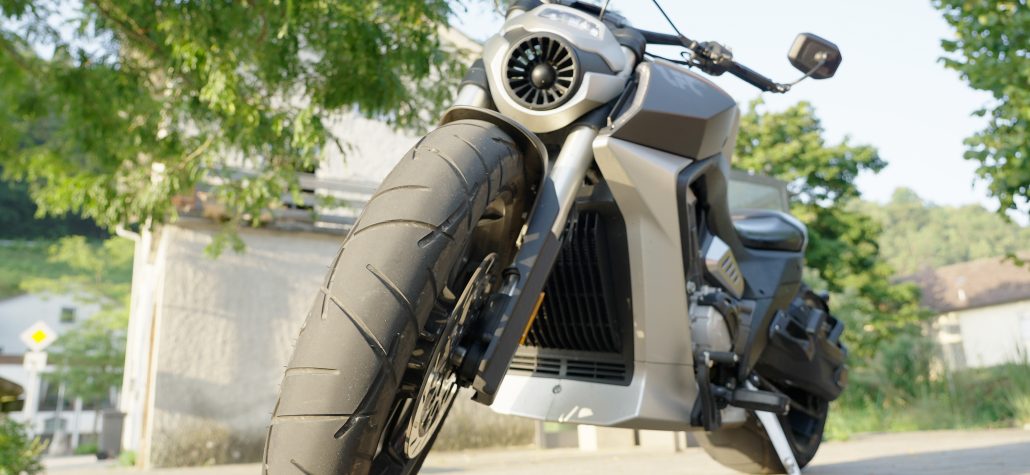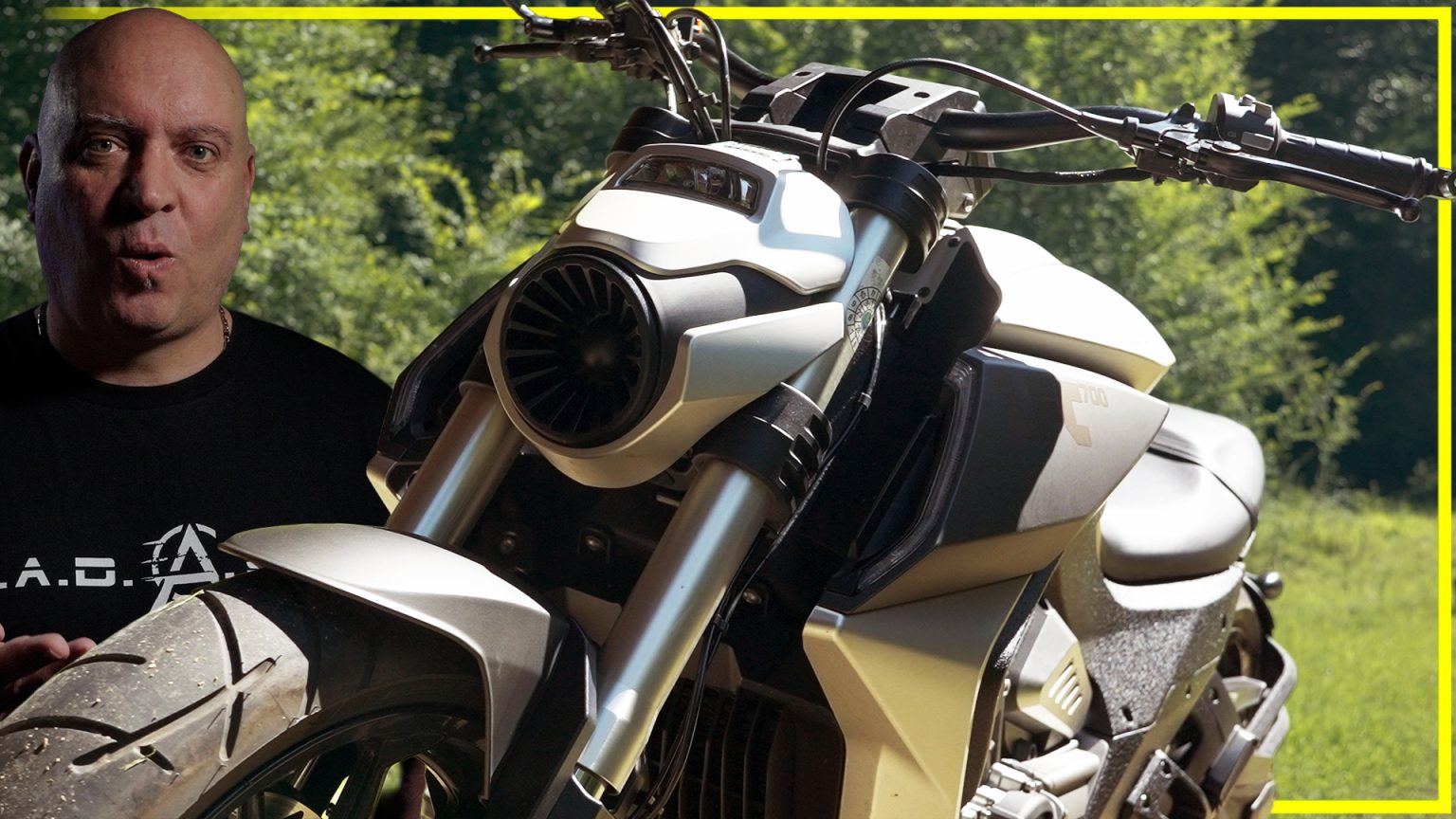- Inline four-cylinder engine in the cruiser segment
- 310 mm wide rear tire
- Unladen weight approx. 280 kg
A cruiser with an inline four-cylinder engine, extremely wide rear tire, and striking design is an unusual combination. The LFC 700 picks up on this and aims to offer a unique riding experience. In testing, the model reveals some special features, but also offers typical cruiser characteristics.

Engine, performance, and character
The LFC 700 is powered by an inline four-cylinder engine with a displacement of 676 cubic centimeters. The Euro 5 version tested delivers 77 hp (56.6 kW). The newer Euro 5+ version is said to deliver 86 hp (63.3 kW) at 10,300 rpm and 60 Nm (44.3 lb-ft) at 8,600 rpm. The extra power should benefit the motorcycle when accelerating and overtaking, even though the 77 hp version already offers sufficient propulsion. However, spontaneous overtaking maneuvers often require downshifting.
In the range between 4,000 and 5,000 rpm, there were occasional brief hiccups. According to the manufacturer, this behavior has been corrected in the Euro 5+ version.
Design and aerodynamics
Visually, the LFC 700 clearly focuses on individuality. The front end looks massive, and the striking air intake at the front is functional and designed to support the intake performance. The headlight sits below it, flanked by daytime running lights that also serve as turn signals and change to yellow when signaled.
The frame and swing arm are made of aluminum and give a high-quality impression. Despite its powerful appearance, the motorcycle is cleanly finished, with cables and wires largely hidden from view.
The 310/35-18 rear tire is the most striking element of the motorcycle. It is the widest tire that is fitted as standard on a motorcycle. Whether it is functionally necessary remains questionable, but it inevitably attracts attention. A 130/70-19 tire is used at the front. The ground clearance is 160 millimeters.

Brakes and chassis
Braking at the front is provided by Brembo four-piston radial calipers and 320-millimeter double discs. At the rear, a two-piston caliper with a 260-millimeter disc is used. Steel braided lines are standard equipment.
The suspension is from Kayaba. The upside-down fork offers 100 millimeters of travel, while the rear shock absorber offers only 35 millimeters. This is clearly noticeable on poor road surfaces. Overall, the suspension is designed to provide neutral handling. Despite its long wheelbase of 1,720 millimeters, the LFC 700 can be maneuvered easily through corners.
With a curb weight of 287 kilograms (633 lbs), the machine is in the heavy cruiser segment. Nevertheless, it remains easy to handle, provided you take into account the limited lean angle. The footrests scrape relatively early, which limits cornering performance.
Ergonomics and operation
The seating position is typical for a cruiser: the footrests are positioned far forward, which takes some getting used to and can lead to some fumbling around when starting off if you are not used to riding a cruiser. The switches are made of plastic, backlit, and functional. There is no ride-by-wire system; the throttle is operated via Bowden cables.
Assistance systems include the mandatory ABS, traction control, and an anti-hopping clutch. Various riding modes are not available. A USB port is located on the side of the vehicle, and the ignition key is also inserted on the side. The steering lock is located separately in the front area.
The 5-inch TFT display shows all important information, but there is no coolant temperature gauge. The fan often continues to run after the engine is switched off, which was particularly noticeable in the test at high outside temperatures.

Handling and everyday use
Despite its unusual geometry, the LFC 700 handles neutrally. Even in tight roundabouts, the motorcycle remains predictable, although the limited lean angle forces you to ride cautiously. The wide handlebars help stabilize the machine, which makes everyday riding easier.
During testing, the wide rear tire initially made itself felt with a worn edge. After some riding time, this was balanced out and the handling became more harmonious.
There is no storage space under the seat; the generous appearance is deceptive in this respect.
Performance and measurements
The measured top speed was around 113 mph, while the manufacturer specifies 100 mph. The sprint from zero to 62 mph was measured at 6.08 seconds. The braking distance from 62 mph was around 63 meters, with a deceleration time of approximately 4.6 seconds. Only the front brake was used for the test; if the rear brake had also been used, which makes perfect sense on a cruiser like this, the result would have been significantly lower. The stationary noise level is 81 dB(A).
Price and conclusion
The LFC 700 costs around €11,000 to €11,500, which is equivalent to approximately $12,100 to $12,650. This puts the cruiser in the mid-range of its class. The workmanship, high-quality components, and unique design make this a model with character.
The cruiser is not designed for maximum lean angles or top performance. However, it offers an exceptional appearance and neutral, surprisingly accessible handling. Those looking for a motorcycle that is off the beaten track and can live with the typical cruiser limitations will get a striking and technically sound model.



